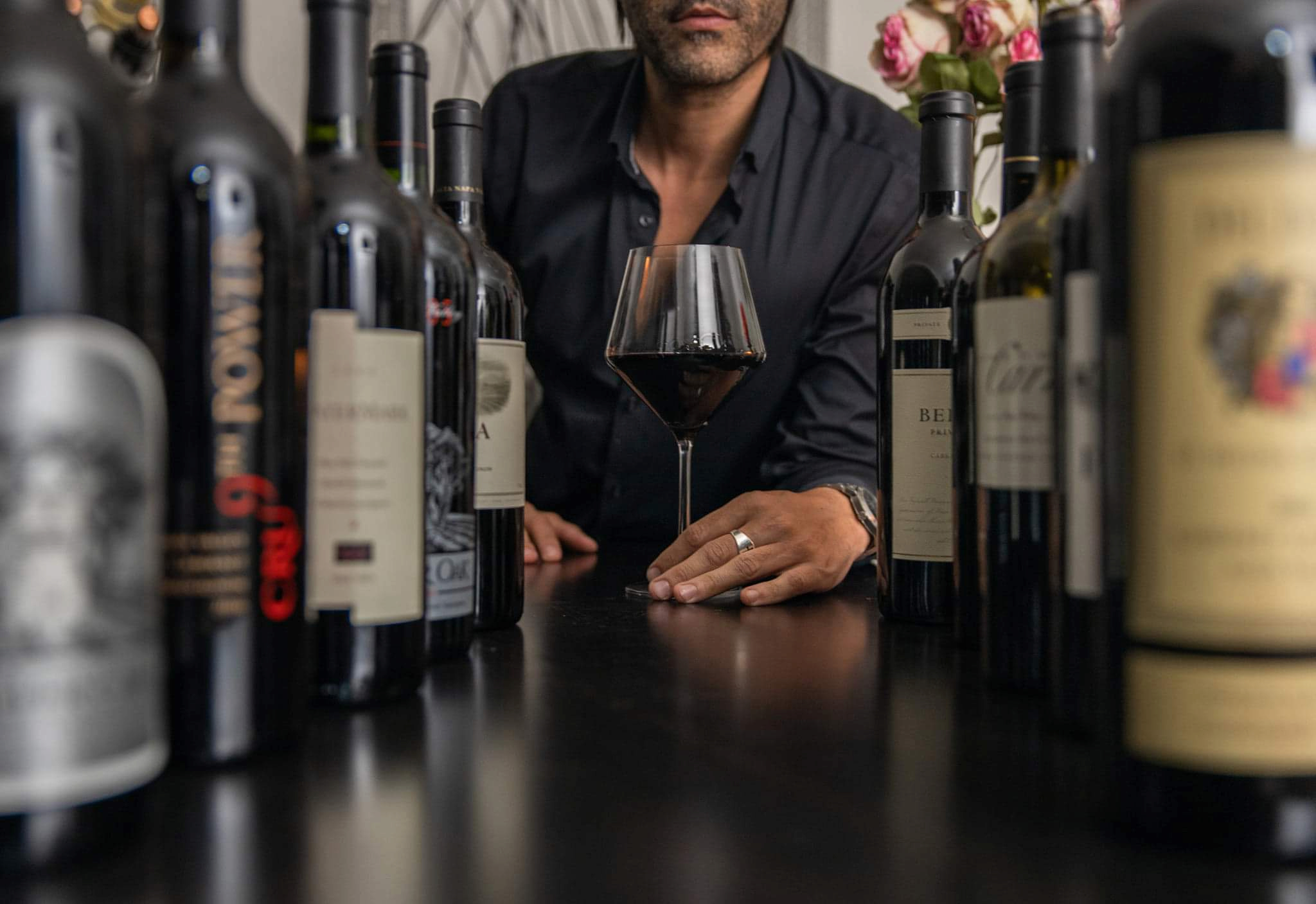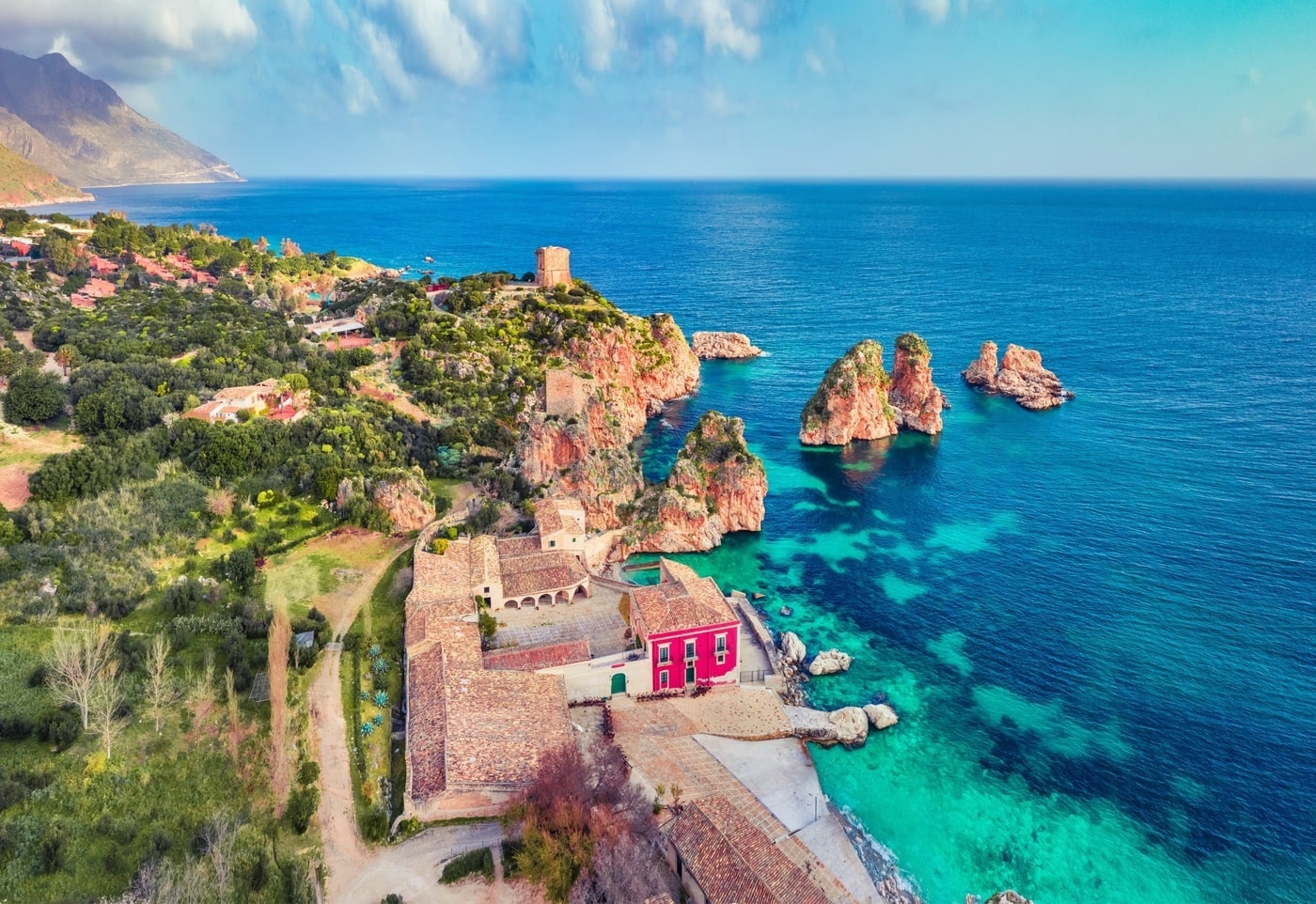If I had a glass of 1945 Domaine Romanée-Conti Grand Cru for every time I heard the expression “wine is art in a bottle,” I could die a happy man.
Arguably, there is quite a lot of truth in the clichè. No two bottles on earth are alike, each experience unique to that moment in time. This is testament to the creative expression of the artistic vigneron.
The Psychology Behind Wine Labels and How They Influence Our Buying Behavior
Unlike traditional art forms that rely on visual (art) or auditory (music) stimulation, Wine engages our senses in a truly immersive and unfamiliar way, telling a story through its captivating visual color clues, enticing aromas, and complex flavors leading us to infer the vintners narrative in a very personal and intimate way. Just like a conductor orchestrating a symphony and all of its dynamic parts, so does the winemaker beautifully directing time, terroir, culture, history, and the unique grape characteristics bringing it into perfect harmony on our palate.
While it would certainly be enticing to explore the intricate details of wine’s structural components, such a discussion deserves its own dedicated space beyond the scope of this article. Instead, our focus will remain on the external influences that sing to us like a sirens call, begging us to feed our curiosity and ultimately enticing us to explore the story behind the wine inside.
I have long been fascinated with the immense power a humble wine label has to evoke deep emotional responses and shape our perceptions of a seemingly inanimate product. Despite its limited graphic real estate, a well-designed wine label has the ability to draw us in, ignite our curiosity, and ultimately establish a profound connection with the wine inside the bottle before we even pull it off the shelf. Clearly, judging a book (or in this case, a bottle) by its cover is the intention.
As a consumer, I too, have been swayed by the persuasive power of an intriguing wine label.
As a Sommelier, I’ve devoted my career to understanding this influence and have resolved myself to answer the quiet question in the back of my mind: what is the psychology behind wine labels, and how/why do they influence our buying behavior?
Designed with Purpose: Intentional and Emotional

In addition to meeting the legal requirements that mandate producers to list the necessary details such as the brand name, alcohol content, the appellation of origin, health warning statement, and other pertinent information, it is crucial not to overlook the subtle emotional messages conveyed quietly through the bottle’s design, many of which we will explore in this article.
Gives Contextual Clues about What to Expect
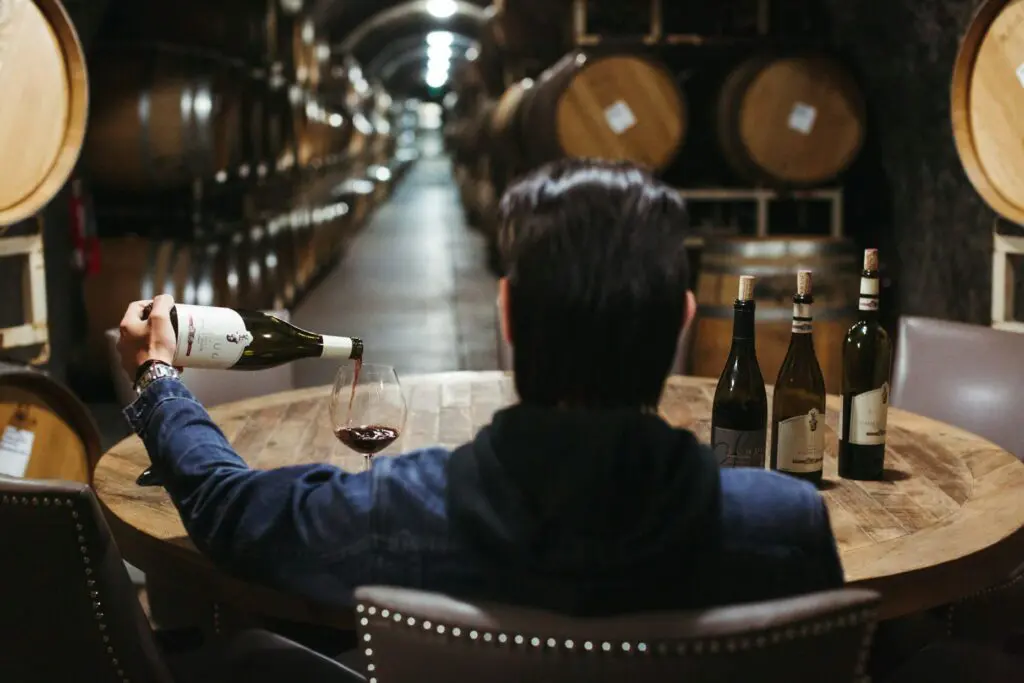
Context is an important element when trying to decide which bottle of wine to gamble on. Personal preferences take precedence and can help shape the buying decision. A well-crafted tasting note on the back label can increase the probability of you buying that wine.
Art + Copy = Emotional Connection
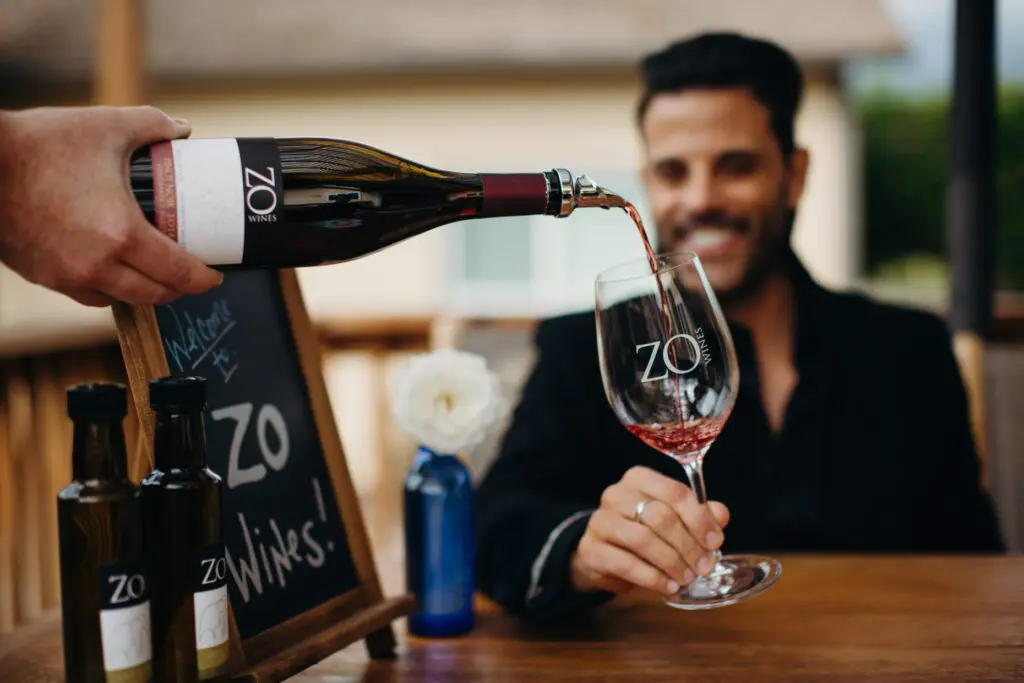
Art and copy are two essential elements in creating a successful brand that can emotionally connect with its audience. Art evokes emotion through its visual impact, using color, composition, and design to convey a message. Meanwhile, copy has the power to persuade and influence the audience, through carefully crafted language that conveys the brand’s personality, values, and benefits. When art and copy marry, they create a powerful emotional connection with the audience, that can leave a lasting impact. By tapping into the emotions of their customers, brands can create a sense of loyalty and trust that translates into repeat purchases and advocacy. This combination of art and copy is at the heart of successful branding, as it allows brands to create a distinctive identity that resonates with their audience, and builds a relationship based on shared values and emotions.
Competing for Attention
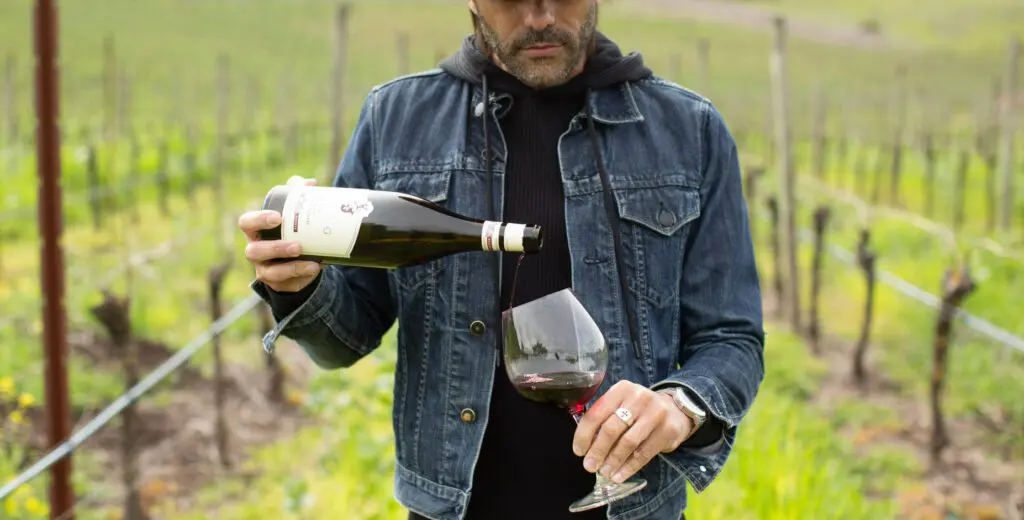
Raise your hand if you’ve ever faced analysis paralysis drifting down the liquor store aisle. Without the influence of a salesman guiding us through the endless sea of options, we are left to discern the good from the bad solely on visual clues such as label design, retail price, and bottle weight/ shape which intrinsically, doesn’t provide enough information to make an educated buying decision. Enter stage left: a compelling design that sparks familiarity and immediately grabs your attention.
Be Relatable
The allure of wine comes in many forms. Its intoxicating effects, its social prestige, and the story behind the brand. Learning the story of a boutique wine brand whose family has been faithfully tending to the land for generations inspires pride, adoration, and a sense of connection to the product. It makes us feel like we’re part of something bigger than ourselves, and that we’re supporting a legacy of hard work and dedication. That’s the cornerstone of the American Dream we can all relate to.
This emotional connection can make the wine taste even better, as it becomes a symbol of something more meaningful than just a beverage in a glass. That dump of feel-good Seritonin strengthens the emotional bond to the brand inspiring you to purchase.
Perception is Reality AKA The Label Effect
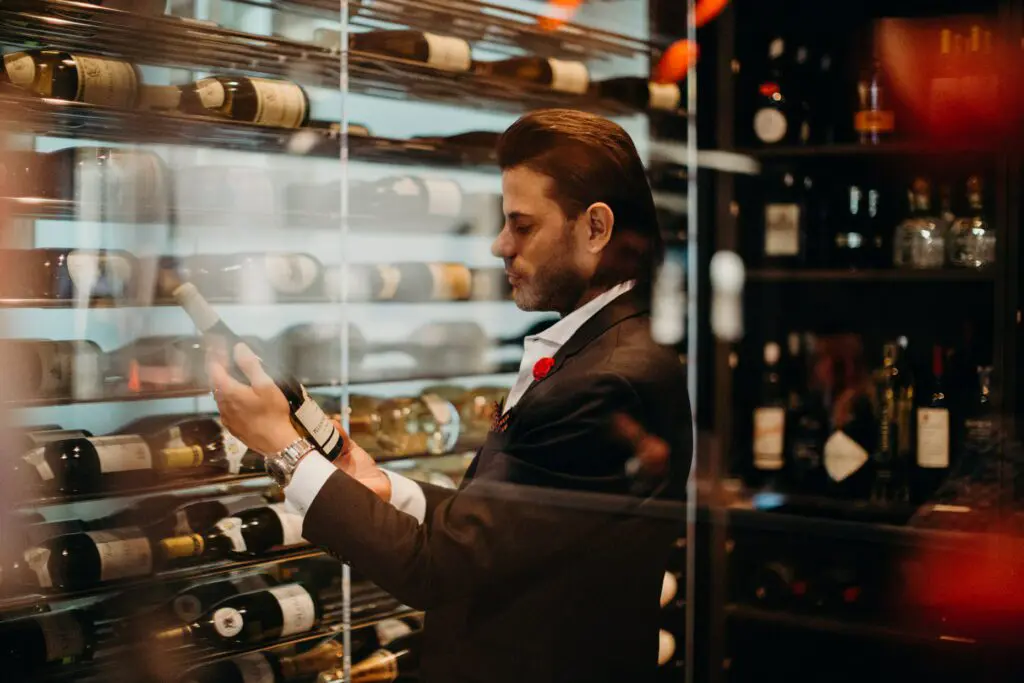
In a study conducted by the University of Oxford, participants were given identical glasses of wine, but the labels differed in price, brand, and origin. The results showed that participants rated the more expensive wine as being of higher quality, even though it was the same wine as the cheaper option. This is known as the “label effect,” where our perception of the wine is influenced by factors other than the taste.
Indeed, our perception of a wine’s quality and taste can be significantly influenced by various factors, including price and label design. Studies have shown that people often rate wines higher when they are told they are more expensive, even if the actual quality of the wine is the same as a cheaper option. Similarly, a wine with an attractive label design and expensive embellishments may lead people to expect a higher quality product, and their perception of the wine’s taste may be positively influenced as a result. This phenomenon highlights the powerful role that our expectations and perceptions play in shaping our experience and enjoyment of wine.
Wine Price
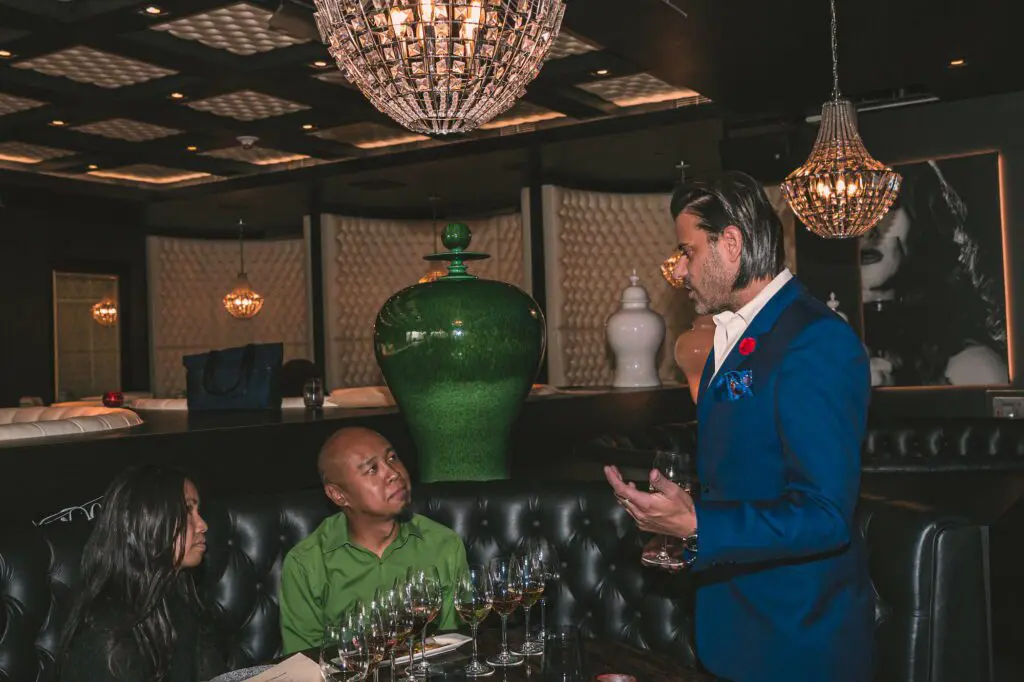
In addition to the persuasive effects of the label, the price is another external factor that can influence behavior. The price of wine can have a significant psychological impact on consumers when making purchasing decisions. Studies have shown that people often associate higher prices with higher quality and prestige, and may be more likely to purchase wine that is more expensive than a cheaper alternative. Let’s be honest, the great wine cellars in the world aren’t filled with Two-Buck Chuck.
This phenomenon is known as “premiumization,” which is the trend of consumers paying more for products that they perceive as being of higher quality or status. This is particularly true in the wine industry, where consumers may view higher-priced wines as a status symbol or a marker of sophistication. However, I would be remiss if I didn’t note, that price isn’t the ONLY indicator of wine quality, and there are many excellent wines available at a range of price points.
Social Identity & Self-Expression
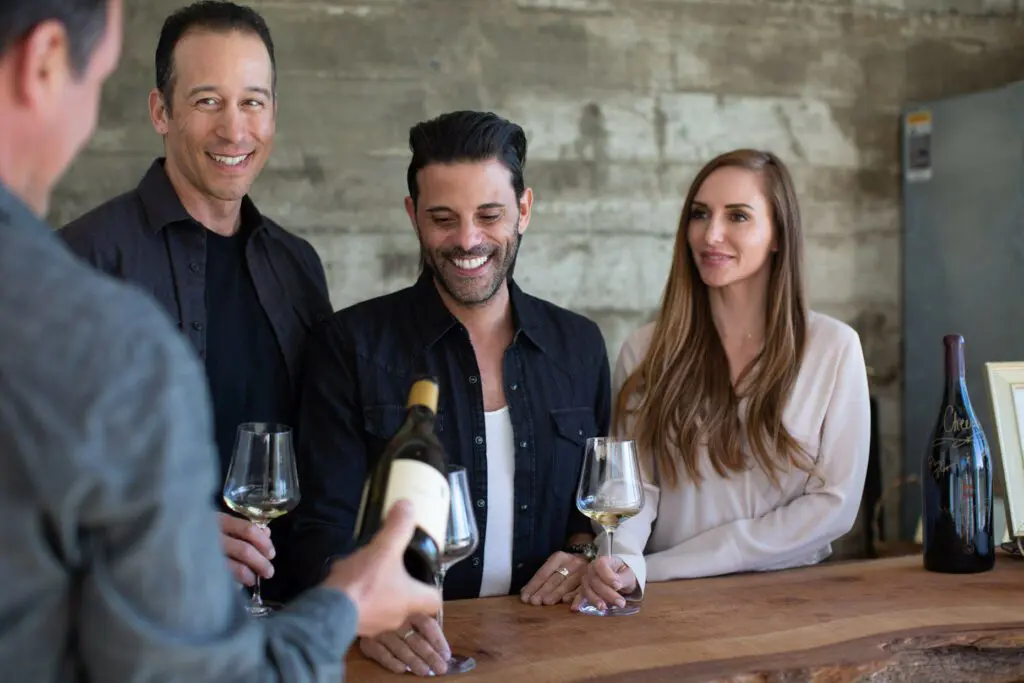
Consumers use brands to express their identity. The need for self-expression can be related to the need for societal acceptance. Our self-expression through brand identity is inherently linked to how we project our income, wealth, and social status. Consumers express their identity in a number of ways: How they dress, where they shop, what kind of car they drive, and yes, even what they drink.
As a diehard Android aficionado (cue the eye-rolling), my green bubbles are relentlessly ridiculed by the iPhone tribe. The debate of which brand is superior is as old as time and may never be settled, but the principle of the argument should be taken into high consideration more so than the conclusion. Why are the two so impassioned by their beliefs?
Simply, it’s not a matter of objective superiority, but rather personal preference and emotional attachment to a brand and how that brand or product represents their values, ideals, lifestyle, and socioeconomic status. Being associated with a brand of prestige and influence can immediately bring a sense of social validation, confidence, and acceptance into a like-minded community.
As a Sommelier with a background in marketing, it’s been fascinating to unpack these concepts along my journey and get a better sense of why some wine brands resonate and elicit a greater response than others. Evidence has shown that those who approach their branding and marketing from a holistic and intentional approach are able to foster a more intimate relationship between their wine brand and their customers.
I applaud wine brands that make an effort to understand their faithful demographic and adapt their brand to be more inclusive, connecting, and relevant.
Intentionally positioning your wine brand in direct correlation to your consumer’s lifestyles, beliefs, interests, and inspirations, is a far more efficient approach than creating a brand and then having to educate the customer on its value and relevance. I believe that is often a missed opportunity with wineries who haven’t thought through their marketing strategy. When done intentionally and authentically, this strategic positioning can be the difference between a boutique or cult wine brand.
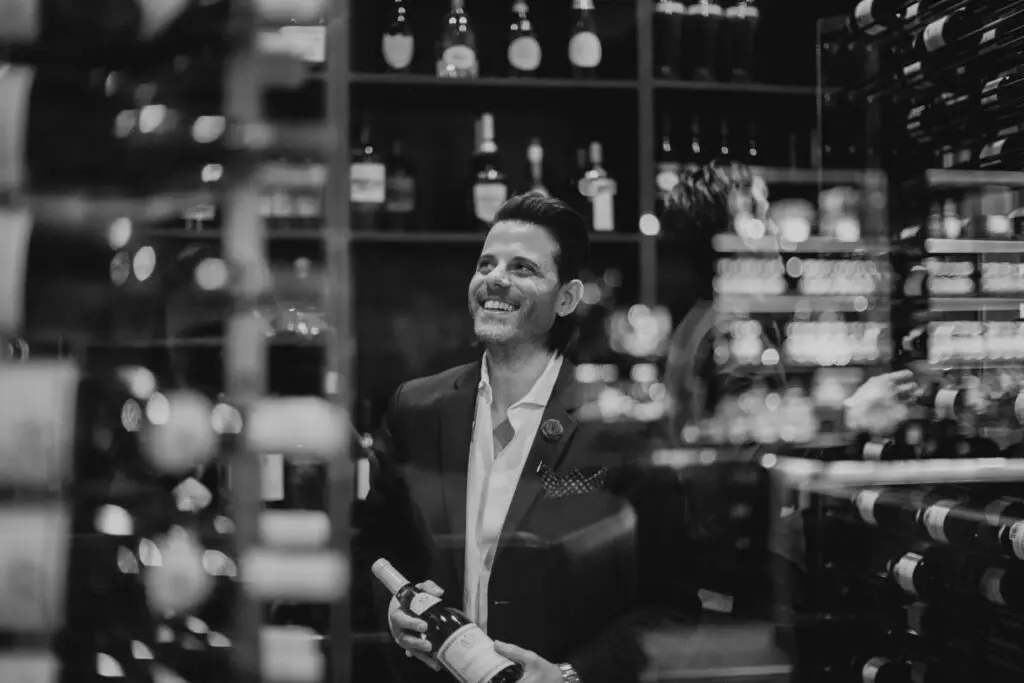
Wine is a commodity item that plays by the same marketing rules as any other product. Next time you find yourself strolling down the aisle, pay attention to the emotional cues that are possibly triggering you at that moment.
I believe that even in the seemingly trivial task of selecting a wine, gaining insight into the emotional cues that drive our choices can offer valuable self-reflection. By exploring the factors that influence our decisions, we can develop a deeper understanding of our own values, beliefs, and desires, which can ultimately inform our actions and shape our experiences. The process of introspection can be especially insightful when it comes to wine, as it reveals how our emotional and social nature influences our behavior and preferences, and how the choices we make reflect our unique identities. Are you committing to a brand because it aligns with your social identity and lifestyle, or because you connected to the story and found a wine that represents your core values? When you ask yourself that question, you may be surprised at the answer.
If you are interested in creating your own private-label wine brand that is curated with your customers in mind, visit www.AppellationWineGroup.com to start the conversation.
Sip well.
Matthew-Lorèn Lindsey is a Las Vegas native with over 20 years of experience in the wine industry. He has been a trusted import-distributor for Las Vegas casinos and is the founder of Appellation Wine Brands, a luxury lifestyle company that creates bespoke wine brands for clients in the hospitality industry. Matthew is also the Executive Sommelier and Director of Wine for National Wine & Music Festivals, where he creates unforgettable wine experiences for thousands of festival-goers across the country. As the lead wine judge for the Pr%f (Proof) awards, the largest double-blind wine and spirit competition in the US, Matthew’s expertise and discerning palate are widely recognized and instrumental in helping to recognize exceptional brands.
